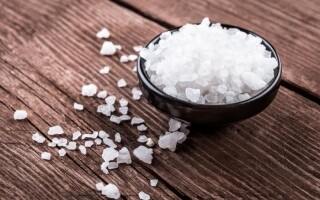
The World Health Organization has published new recommendations for the use of low-sodium salt substitutes. These recommendations call for replacing regular salt, commonly used in home settings, with substitutes that have lower sodium content with the aim of reducing risks associated with excessive sodium consumption.
Research shows that excessive salt consumption leads to increased arterial pressure, which raises the risk of developing cardiovascular diseases, strokes, and kidney disease. According to WHO estimates, 1.9 million deaths annually are associated with excessive sodium consumption.
Although WHO recommends not exceeding a daily sodium intake of 2 grams, the average consumption is about 4.3 grams. In 2013, member countries of the World Health Organization committed to reducing sodium intake by 30% by 2025, but achieving this goal has proven challenging, leading to an extension of the deadline to 2030.
The main challenge is the difficulty in reducing salt consumption, which requires changing dietary habits and adapting to less salty flavors, as well as alterations in food preparation methods. Industry also faces difficulties in decreasing sodium content in their products without changing the flavor.
In this regard, WHO recommends using salt enriched with potassium as a substitute for regular salt, where part of the sodium in salt is replaced with potassium chloride, which is an essential mineral for the organism. Sufficient intake of potassium, found in fresh fruits and vegetables, helps to lower arterial pressure.
Global clinical trials have shown that replacing regular salt with potassium-rich salt can significantly reduce the risk of cardiovascular diseases. Despite the potential health benefits, there are barriers to the widespread adoption of using potassium-enriched salt, including cost and accessibility.
To maximize the effectiveness of the new recommendations, it is essential to ensure the broad availability and reasonable pricing of salt substitutes enriched with potassium, alongside their sale in conjunction with traditional salt to facilitate access. It is also necessary to enhance informational campaigns to help people understand their benefits and promote usage.
Although potassium-rich salt is beneficial for most people, it may be detrimental for those suffering from chronic kidney disease due to difficulties in processing excess potassium. Therefore, clear warnings need to be introduced regarding these products to ensure safe use.














